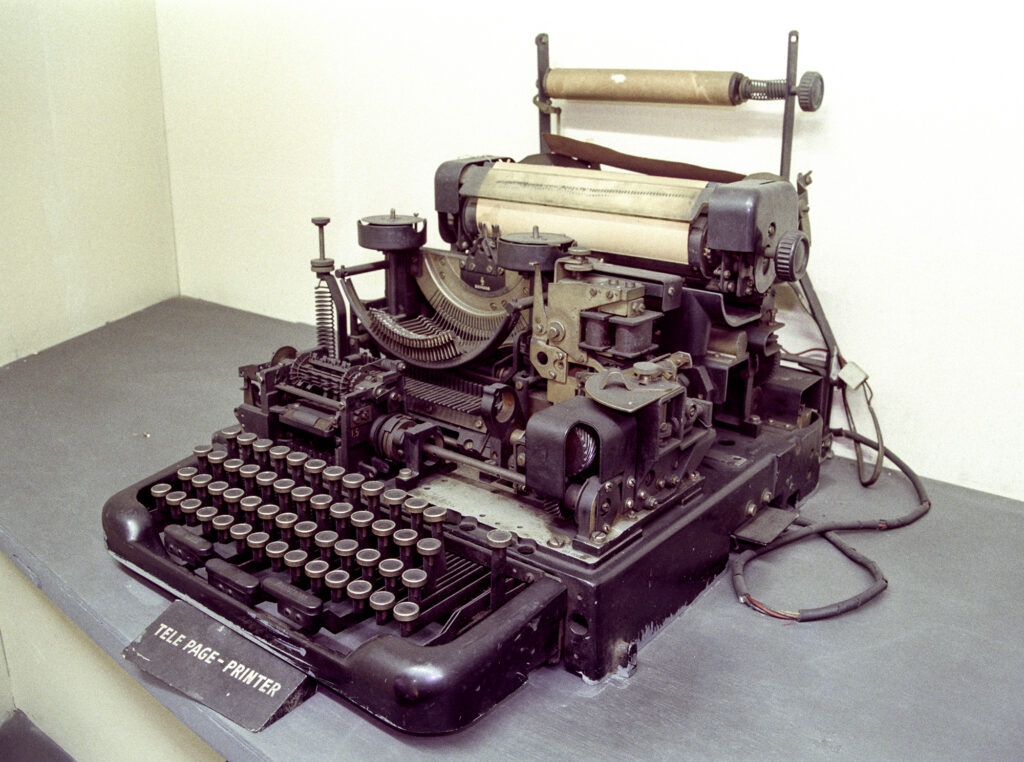Teleprinter (or Teletypewriter) is a telegraphic instrument that transmits and receives printed messages and data via telephone cables or radio relay systems. Teleprinters became the most common telegraphic instruments shortly after entering commercial use in the 1920s. They were used by operators in local telegraph offices and switching centers, by press associations and other private networks, and by subscribers to international telegraphic message services.
Teleprinters were invented in order to send and receive messages without the need for operators trained in the use of Morse code. A system of two teleprinters, with one operator trained to use a typewriter, replaced two trained Morse code operators. The teleprinter system improved message speed and delivery time, making it possible for messages to be flashed across the country with little manual intervention.
The teleprinter consists of a typewriter-like keyboard and a printer, powered by an electric motor. The two devices are coupled to the motor by clutches that are brought into operation automatically when required. A message is sent by typing on the keyboard. Each key stroke generates a sequence of coded electrical pulses, which are then routed by electronic switching through an appropriate transmission system to the destination. There a receiving teleprinter decodes the incoming pulses and prints the message on paper. (To view a teleprinter in action, click here)

Two different coding schemes have been used for teleprinters. The first was a variation of the Baudot Code, in which letters, numbers, punctuation marks, and keyboard functions were represented by 32 combinations of 5 “on” and “off” pulses. With the advent of digital computers in the 1960s, a new coding scheme, the American Standard Code for Information Interchange (ASCII), was developed and came to be widely used by teleprinters. ASCII employed 7 code pulses and was thus able to provide 128 combinations, giving a much more extensive range of symbols that could be transmitted. Teleprinters utilizing the ASCII code could transmit messages at speeds up to 150 words per minute, compared to 75 words per minute for machines using the Baudot Code. (Read more)
The Baudot code preceded the American Standard Code for Information Interchange (ASCII). To read more about the importance of these coding systems for information exchange, see next page.

